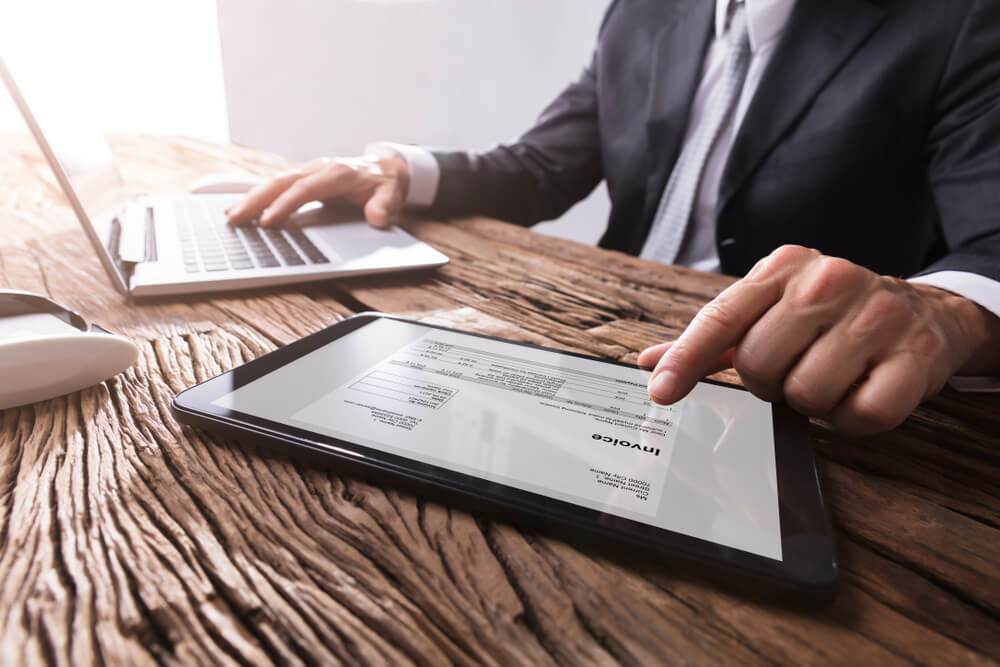The concept of electronic checks has been around for many years. Their popularity rivals that of credit cards on websites across the world. The electronic check, or echeck, is an excellent alternative to the old paper checks as it easily facilitates the process of paying for services.
The Beginnings
When checks first emerged around 1762, they were physical checks. Vendors had to set aside time to make a bank deposit before a check began its clearance process. Today, the workforce needs to deposit checks has declined in the day-to-day business operation.
Since the advent of the internet, the evolution of the electronic check, or echeck, is a popular option for making payments, and it is taking the paper check out of circulation. Many haven’t written checks in years. There are some who no longer order checks. Still, some are uncertain about how the echeck functions, while others have concerns about its security.
How to Pay With echeck

An echeck is processed like a paper check. The difference is that the echeck is computer-generated. The paper check is a real physical document requiring a signature. Learning how to send an echeck is easy and requires some simple keystrokes on the computer.
Before addressing how, let’s discuss how echecks process. Many use echecks to satisfy monthly obligations like recurring bills. Some even use echecks to send money to others. Other echeck payments are for rent, mortgages, utility payments and more. Frequently asked questions are, how long does an echeck take to clear? What are its advantages? Is it safe to submit an echeck?
To create an echeck, you must have an account with a bank or echecking service company designed to transmit funds through an echeck account. Due to technological advancements, many traditional banks have echeck capabilities. Once enrolled with your account provider, you have established a link to your account.
Once the link is active, money deducts from the payer’s account. It is then transferred into an account designated by the payee. The transfer goes through the Automated Clearing House (ACH) network.[1] Through the payee’s account, ACH allows payments to transfer from the payer’s account, which is then authorized with the consumer’s approval.
Most often, granted approvals can happen one of three ways: a recording of verbal authorization, a signature, or a “Terms of Agreement” form.
Echecks and electronic funds transfers, or EFT, are similar in concept. The echeck is the EFT, which processes over the ACH network.
For example, lenders ask car owners to commit to a monthly draft through an echeck payment document. With the car owner’s signature, the lender is now authorized to legally have a payment deducted from the payer’s account every month on a designated date or within about 72 hours of said date.
How to Send an Electronic Check
How to send an echeck? The process is simple. Funds withdrawn from the payer’s bank account transfer through the ACH network and then passes on to the payee’s bank. Once the echeck shows at the other institution, the bank will deposit the funds into the payee’s bank account. The payment process is the same as the paper check, but the echeck has several advantages.
The first step is to go into the account services area and select the option that will allow you to send or make the payment. Banking information must be input, which is the information already on a pre-printed check from your bank.
The information listed on the bottom of the payer’s account is vital. The first nine digits are typically your routing number. The routing number serves as an address to identify the bank where the payee’s bank account sits. The routing number is not synonymous with the account number.
The account number follows the routing number. Usually, the routing number ranges from 8-10 digits. In some cases, it begins with three zeros. Also, a check number must be input. The check number sits to the top right of the paper check. Some echecks require check numbers, while others do not.
Input all of the required information in the correct echeck fields, including the date on which the authorized funds meet the withdrawal eligibility. Nowadays, many do not own paper checks. If this is the case, you can find the bank account information online or by calling your bank’s customer service department. Before giving authorization, ensure that there are sufficient funds in the account. An account with insufficient funds is typically charged an insufficient funds fee.
How Long Does an echeck Take to Clear?

Some of the distinct advantages of echecks include recurring transmissions of payments, receiving a confirmation number, and garnering faster processing times. So how long does an echeck take to clear? It will depend upon the payee’s network. Still, around a 48-hour window is standard before deducting funds from the payer’s account to the payee’s account.
Traditionally, checks, whether paper or virtual, clear on business days only. If the fifth day of processing is on a Friday, then the funds are available on the following Monday, the first day of the business week. Understanding that the funds take within three to five business days to transfer, the echeck will bounce within 48 hours if there are insufficient funds.
The bounced echeck acts like the paper check process. You will need to contact the payee for any additional fees required for resubmission. Sometimes, there are no additional fees associated with the resubmission of the check, but it will depend on the payer in question. However, the resolution of the debt is not totally lost but just delayed.
To cancel an echeck, there are straightforward procedures to follow. There is a difference between canceling an echeck prior to clearance and canceling an echeck after it has cleared the account. If the echeck is pending, call your payee immediately. If it has cleared, you cannot cancel the echeck.
If you have a PayPal account, PayPal has an echeck platform that provides specific procedures to follow when used. Check PayPal for the outlined steps to complete an echeck transaction. PayPal may include a surcharge for the use of the check. It is due to the additional fee associated with creating the check option on the PayPal platform.
Now that you are confident in using electronic checks, complete each step, and let us know your results. Echecks are a safe and secure method of completing transactions. Ensure that the link used for each transaction is legitimate. The echeck is now a priority means of satisfying any outstanding debts. Let us know what you think. Reach out to us at Checkissuing today.






